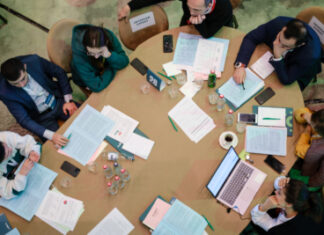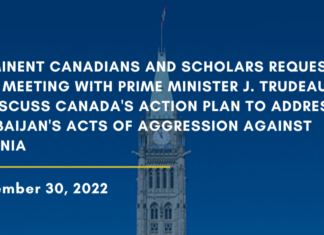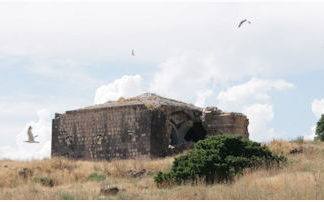NEW YORK — The United Nations, a center of world diplomacy located in New York City, itself one of the most international cities in the world, is a plum posting for any diplomat. Naturally, many of those who ply their trade at the United Nations have had distinguished careers. Ambassador Garen A. Nazarian, Armenia’s present representative to the UN, is no exception. He rose quickly through the ranks, beginning at the end of the Soviet period, to hold a number of key positions in the Armenian Foreign Ministry in a period of post-independence rapid development and innovation. His career is worth exploring not only for its own sake, but also for understanding the development of modern Armenian diplomacy. The first anniversary of his service at the UN is an opportune occasion for such an examination.
Nazarian’s grandparents and parents were born in New Julfa, the famous Armenian suburb of Isfahan, in Iran. They immigrated with their respective families to Yerevan after World War II, like many Iranian-Armenians. Nazarian’s father was a chemical engineer, who traveled for work. Nazarian’s parents made sure their two children received a good education in Soviet Armenia. Interestingly, the younger brother, now Col. Mesrop Nazarian, also went into state service. He recently became the defense attaché of the Republic of Armenia in Washington, DC, so that the two brothers for the first time in their careers can occasionally visit each other
while at their respective postings for work.
At Yerevan State University, Nazarian pursued Near Eastern and Iranian Studies. He learned languages, geography and history. This was a period of great change in Soviet Armenia and the Soviet Union as a whole, thanks to Gorbachev’s reforms. Nazarian’s worldview began to change. Students could travel to Iran, Afghanistan and the Arab world and learn about life and politics there. During the final years of his studies, Nazarian himself also worked in his father’s company, called ArmAgroPromService. This was a Soviet-Armenian company exporting agricultural materials. Nazarian became more interested in international relations.
Nazarian was also influenced by some patriotic Armenian professors who promoted the idea of Armenia’s independence in the university. Gourgen Melikian, Georgi Nalbandian and Vardan Melikian, were among his lecturers. Nazarian soon began to take part in the demonstrations that took place in Yerevan in the late 1980s. He participated in protests, and was among the students who visited villages of Karabagh where Soviet troops were already stationed. After the Armenian earthquake of 1988, Nazarian went to help as a volunteer in Spitak, with his fellow university students.
After graduating from Yerevan State University, Nazarian studied at the Diplomatic Academy in Moscow for two years, with the expectation that he would eventually return to Armenia.
In Armenia’s Service
Indeed, in 1991 Nazarian entered the Armenian foreign service. He had gone through a qualifying commission to get his appointment. Interestingly, many of the new diplomats had studied Near Eastern Studies. There were only a few experienced Armenian Soviet diplomats from Moscow, though there were others who had garnered experience in the Soviet period and were already working in Soviet Armenia’s Foreign Ministry. In all, there were about 30 people. Their numbers increased as time went on. Some Armenians, like the first foreign minister Raffi Hovannisian, came from the Armenian Diaspora to serve the new republic.









